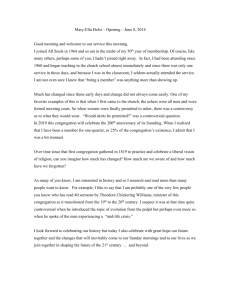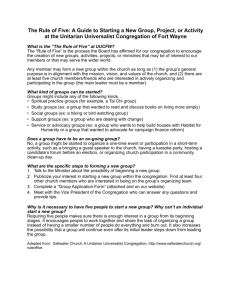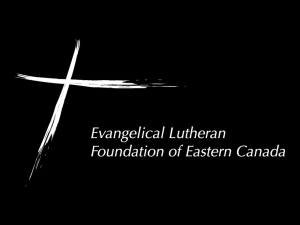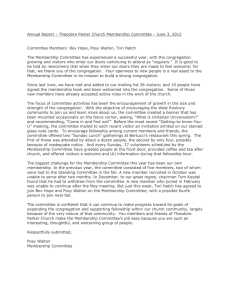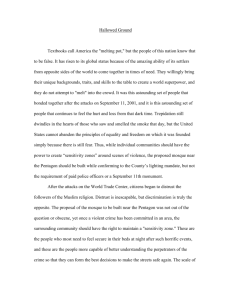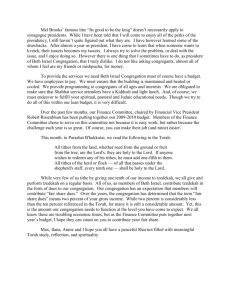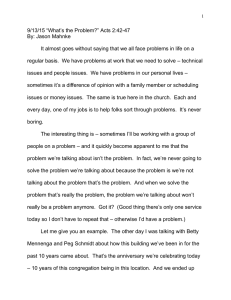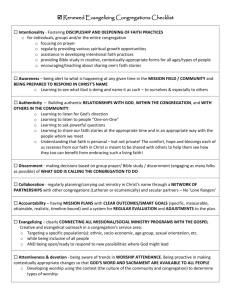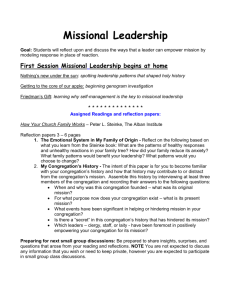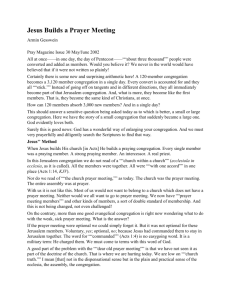ideas for strengthening community connections
advertisement
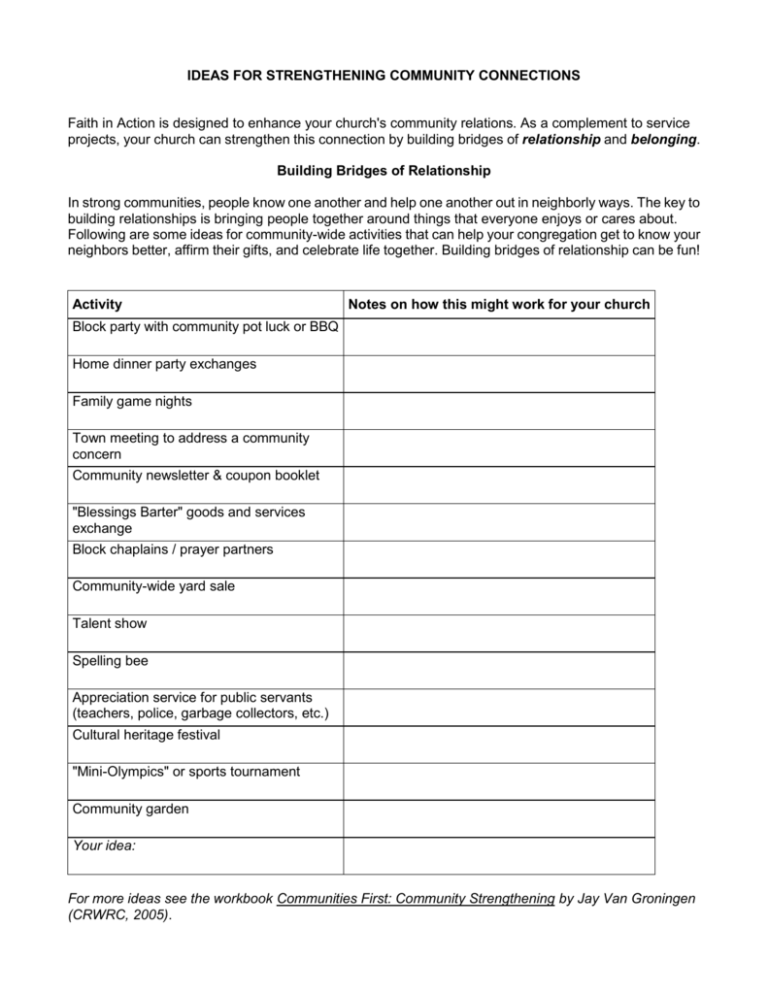
IDEAS FOR STRENGTHENING COMMUNITY CONNECTIONS Faith in Action is designed to enhance your church's community relations. As a complement to service projects, your church can strengthen this connection by building bridges of relationship and belonging. Building Bridges of Relationship In strong communities, people know one another and help one another out in neighborly ways. The key to building relationships is bringing people together around things that everyone enjoys or cares about. Following are some ideas for community-wide activities that can help your congregation get to know your neighbors better, affirm their gifts, and celebrate life together. Building bridges of relationship can be fun! Activity Notes on how this might work for your church Block party with community pot luck or BBQ Home dinner party exchanges Family game nights Town meeting to address a community concern Community newsletter & coupon booklet "Blessings Barter" goods and services exchange Block chaplains / prayer partners Community-wide yard sale Talent show Spelling bee Appreciation service for public servants (teachers, police, garbage collectors, etc.) Cultural heritage festival "Mini-Olympics" or sports tournament Community garden Your idea: For more ideas see the workbook Communities First: Community Strengthening by Jay Van Groningen (CRWRC, 2005). Building Bridges of Belonging How can your church cultivate a deeper sense of belonging to the community and a growing commitment to its well-being? Following are some ideas for helping the congregation to think about members of the community as “our people.” Notice that these activities can supplement service projects by strengthening connections with the people and organizations involved in Faith in Action. Create a "community affairs" bulletin board with notices of local events, newspaper clippings relevant to the community, information about services, programs of benefit to the community, etc. Encourage congregational patronage of the local economy by distributing lists of restaurants and shops, and by purchasing church supplies and services from community businesses. Start a tradition of eating together after church at a local restaurant once a month or so. Bring a group from the congregation to attend cultural or sports events sponsored by the community. Plan joint events with other local churches or organizations, such as a harvest party, softball game or Easter egg hunt. Form a "crisis response team" that is ready to respond compassionately when tragedy strikes in the community—for example, by bringing meals to a family that has lost a child, organizing a prayer vigil at the site of a shooting, or donating household items after a fire. Set aside a portion of the funds used for internal church care toward a related need in the community. For example, donate a portion of the building fund to a homeless shelter; the budget for children's ministry may include items for a local day care; a fellowship meal can be combined with a food drive. Offer the church building to host community meetings and events. Encourage church members to report job openings in their place of employment, and distribute this list to local employment offices. Move church events outside the church building, into the community: Sunday school class or committee meetings at a coffee shop, VBS in a local park, youth group at a rec center. Organize "field trips" from the congregation to points of interest in the community such as a museum, tourist attraction, historical site, or entertainment center. Include special events, volunteer opportunities and prayer points related to the community in the church newsletter, bulletin, and calendar. If your church is partnering with a local organization for a Faith in Action service project, invite a representative to a Sunday service to share a brief introduction to their organization. Host a "community forum" with representatives from service agencies and other community leaders (see suggestions for contacting leaders in the "Networking Interviews" tool on this CD). Some communities have a directory of service organizations, cultural sites, government offices, and elected officials. If your community does not have this, consider working collaboratively with local contacts to create one. Make the directory available to the congregation. [Your idea:] _____________________________________________________________________ Which three ideas seem most exciting, achievable, and attractive to your context? Adapted with permission from Church Mobilization Guide: Equip The Church For Transformational Community Ministry by Heidi Unruh (2007), www.fastennetwork.org.

